
If you are having a hard time deciphering the DTC error code that’s on your dashboard, you may have some questions about the process and how to go about it. Before you purchase a diagnostic trouble code reader, you should make sure that your vehicle is compatible with the scan tool.
It should also be able to detect the make and model of your vehicle automatically. Once you have the correct scanner, you can then easily transfer your diagnostic trouble codes to your smartphone or computer. Bluetooth or Wi-Fi is also a good way to transfer them to your smartphone.
OBD II code reader
Using an OBD II code reader for diagnostic trouble codes can help you find the exact source of a problem. Trouble codes appear when an underlying system fails. Often, they are caused by a faulty component in the engine, transmission, or emissions system. An OBD II code reader is useful for locating faults in these systems, and can help you determine whether you need to take your vehicle to the mechanic or repair shop.
The codes are generated by an engine’s computer and can tell you what is wrong with the car’s transmission or air conditioning system. They are also used to diagnose failures in the car’s air conditioning system, such as a failed compressor. A professional OBD II code reader can easily diagnose these problems.
However, they are not enough to diagnose specific problems with your car. There are other things you should keep in mind before purchasing an OBD II code reader.
OBD II code readers come in several types, and understanding their differences will help you choose the one that’s right for your needs. OBD2 code readers are typically compact with an LCD screen and few buttons. The OBD scanners are typically equipped with a range of troubleshooting tools that can diagnose manufacturer-specific trouble codes.
Some even use live data for better results. The OBD reader for diagnostic trouble codes can even be used with Bluetooth-enabled smartphones.
In addition to being a great investment, OBD II code readers also give valuable information about a vehicle’s potential problems. While DTCs are meant to be a guide, clearing them doesn’t guarantee a problem will go away. In fact, clearing these codes can have unforeseen consequences, such as an engine failure and a huge liability. That’s why it’s best to use a telematics system to track a car in real-time.
Scanner
A Scanner is a device for identifying and analyzing diagnostic trouble codes on your vehicle. The codes are divided into several categories, including powertrain and body. While powertrain codes illuminate your Check Engine Light, body and chassis codes are not. Other types of diagnostic trouble codes are generated by the transmission or other system, and network and vehicle integration codes are related to the shared computer systems of your vehicle. A scan tool will also display the definition of each code.
The most common type of diagnostic trouble code is DTC (diagnostic trouble codes). DTC faults can be caused by accidents or a car repair process. Deleted DTCs leave the door open for more problems and hinder the diagnostic process. A DTC may also result in a sensor reset or loss of communication with a module. The system may malfunction. So, when you need to fix the vehicle, you should first understand why the vehicle is showing DTCs.
EVAP (Electrical Vehicle – Emissions-Variable-Potential-Auxiliary Pressure) codes are related to issues with vehicles’ EVAP systems. They help keep air pollution to a minimum by preventing gas fumes from reaching the atmosphere. Speed and idling are other common areas that a vehicle’s EVAP code will indicate. Faulty computer systems, faulty sensors, and other problems can result in these codes. Besides, transmission codes monitor the transmission and idling system. Most often, transmissions are the source of a transmission problem. Therefore, the right tools are essential for diagnosing problems with on-board systems.
A good OBD scanner will be able to read and write DTCs. These codes can be found in the engine’s computer, as well as in the vehicle’s CAN bus. This means that an OBD scanner can help you identify the problem before spending money on a repair. With a scan tool, you can read DTCs for any car. If it matches the code, then the problem can be easily resolved.
Permanent code
A permanent diagnostic trouble code (DTC) is a stored code that is not erased when power is turned off. PDTCs are stored in the ECM during the time between trouble occurrence and shut-down. During this time, the vehicle will not function properly or meet emissions requirements. PDTCs should only be erased after they have accumulated more than one. This process can take hours or even days. For more information on DTC repair, read this article.
What is a DTC? DTC stands for Diagnostic Trouble Code and it is an alphanumeric code made up of four letters and a number. This code is set on the computer’s computer when there is a problem. It makes diagnosis easier. However, a car that develops a persistent DTC may not be able to be repaired unless the manufacturer fixes it. A good way to solve this problem is to contact a technician.
What are the causes of DTCs? If the problem is a result of something you did, it may be a result of a software or hardware issue. There are also various methods to clear the codes from the ECM. You can also try resetting the vehicle’s ECM. A persistent DTC means that your car is experiencing a problem. A solution must be found to solve the problem, otherwise, the DTC will recur.
If the DTC is a result of a faulty component, a technician can attempt to repair it manually by disengaging the battery and resetting the ignition. Permanent DTCs can also be cleared with a dedicated monitor cycle, but this will take more time and research than the previous method. However, this method requires you to diagnose the fault that caused the DTC. Then, it is important to remember that if the vehicle is still showing the Permanent DTC, you may have to perform an emissions test.
Pending code
If your car is constantly displaying a pending diagnostic trouble code, it probably means something is wrong. It might be something as simple as a sensor malfunction, or it could be a more serious problem. Either way, pending codes are good to pay attention to, and the only way to eliminate them is to fix the underlying problem. Here are some helpful tips. You may be surprised at what they mean. Pending codes aren’t immediately indicative of an issue.
The on-board computer’s diagnostic system stores diagnostic trouble codes in response to the problems detected in your car. The first time you start your car after you see a pending diagnostic trouble code, the CEL will turn on. Fortunately, most of these codes will eventually go away on their own. However, if you’re concerned, you can choose to repair the problem yourself. Here are some helpful tips to repair a pending diagnostic trouble code.
Once you’ve identified the problem, the next step is to determine if it’s caused by a component or process. The engine may be running when a pending code shows up, or it may be in a resting state. Either way, you’ll need to fix the underlying issue or replace the engine to prevent further damage. You can find the source of a pending diagnostic trouble code by searching online.
Diagnostic fault codes follow a standard format. The first digit indicates the type of system that is affected. The second digit indicates if the test was run before the pending code was recorded. If the test runs again, the pending DTC will be cleared. A pending diagnostic trouble code is a signal of a serious problem, and you must fix it as soon as possible. You can also check the DTC status in your car’s computer by pressing the ENTER button.
Meaning of code
Diagnostic trouble codes (DTC) are numbers that your car displays to tell you what’s wrong with it. They are five characters long and represent a different fault code. While many vehicles have the same codes, some differ slightly. For example, P0128 could mean that your engine coolant is running below the thermostat’s regulating temperature. The codes are standard and follow SAE definitions. They indicate a problem with the engine’s fuel and air metering subsystem.
When you’re trying to figure out why your car is giving you these messages, you should first know what they mean. While DTC stands for Diagnostic Trouble Code, its meaning is different for each vehicle brand. The manufacturer and dealer of your car will be able to tell you exactly what each DTC stands for, but if you’re not sure, you can also use a vehicle diagnostics software to check your car’s codes. The scan tools usually give you a one-line description of the problem, but some tools even include code definitions.
While not all problems result in a DTC, they do indicate a problem. A DTC can mean something as simple as a sensor circuit out of range or as serious as a problem with your emissions control system. Knowing where your DTCs are stored will be vital to reading them and fixing them. Generally, the engine’s engine control module and powertrain control module are the places where these codes are stored. The DTCs are also stored in the car’s manual.
Real-time vehicle diagnostics can detect DTC fault codes that indicate an imminent engine failure. They can tell you exactly what’s wrong and where to find a repair shop. However, there are non-critical DTC fault codes that still need attention. These include emissions-related faults that do not cause excessive pollution and problems with the check engine light (aka the MIL).


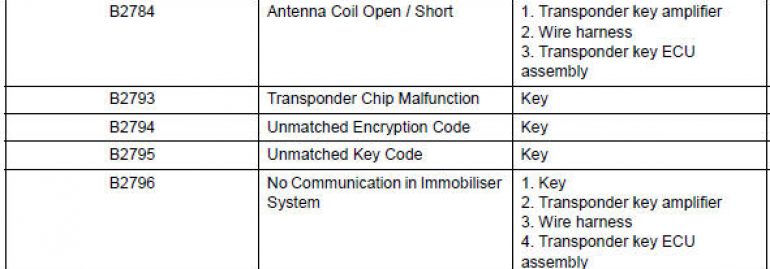
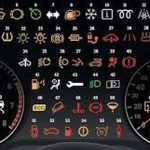
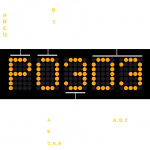
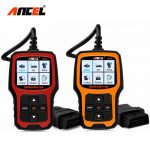
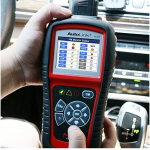
NEED Codes READER OBD 1 scanner for 1989 mercedes benz sel 560 w126 i would like to read codes on my car